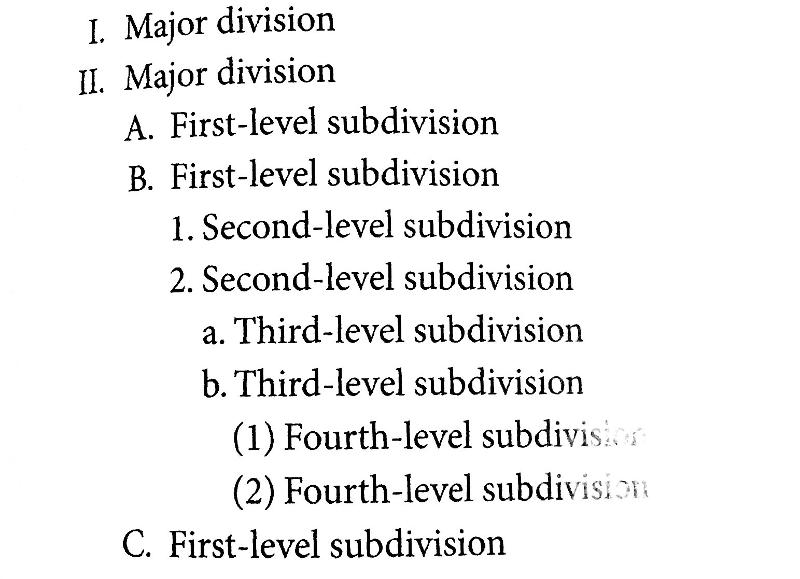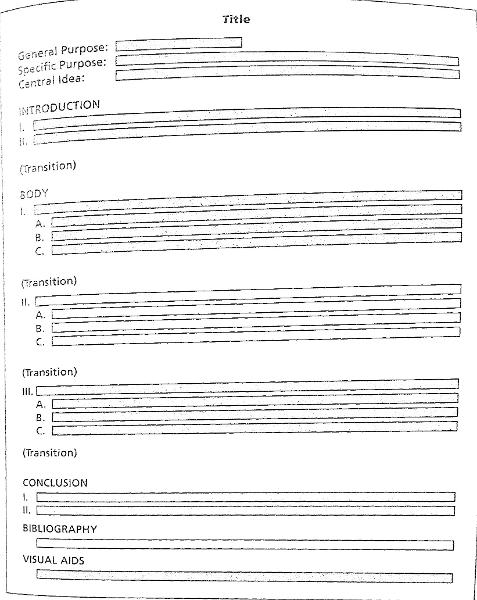1
Outline
- Provides a detailed plan to help the speaker organize thoughts into a logical sequence in to make sure nothing important is left out
- The basic structure of the speaker's ideas in a streamlined form
- is not a word for word script
- used only for preparation
- is not taken to the lectern
- helps you to see the relationship between ideas
2
Topic outline
- A systematic arrangement of ideas, using words and phrases for headings and subheadings
3
Complete sentence outline
- systematic arrangement of ideas, using complete sentences for headings and subheadings
4
Standard subdivisions

- Mark your main points with Roman numerals (I, II, III, etc.)
- indent the next level of supporting materials underneath and Mark with capital letters (A, B, C, etc.)
- then go to Arabic numerals (1,2,3)
- then go to lowercase letters (a, b, c, etc.)
- if you need to go further use parentheses with numbers and letters
*Each time you subdivide a point you indent
5
Parts of a outline

6
Title of your outline
- Should not be mentioned in your speech
- May be requested so that your speech can be publicized in advance
- a catchy title might entice people to come hear you
- should be brief and descriptive
7
Purposes and central idea of your speech
- Having your general purpose, specific purpose, and central idea listed on your outline or help you bring in to Sharp focus the main points and supporting materials
8
Body of the outline
- Each main point should be identified by Roman numerals
- has its own numbering sequence, independent of the introduction and conclusion
9
Transitions of the outline
- Should be inserted in the outline at appropriate. Places
- should be labeled and placed in parentheses
- they are not included in the numbering system of the outline
- should be place wherever they are needed
- should be in three
crucial places:
- 1. Between the introduction in the body of the speech
- 2.between the main points
- 3. Between the body of the speech And the conclusion
10
Bibliography of the outline
- Should be at the end of the outline
- A list of the sources that you used in preparing to speech
- in alphabetical order
11
Visual aids of the outline
- Give a brief description of them
12
Speaking notes
- Brief reminders of the points A speaker plans to cover during a speech
- helps if you forget a few main points
13
Guidelines for preparing notes
- Make indentions in your speaking notes that correspond to those in your outline
- use only one side of a sheet of paper because you might forget to turn the paper over
- Write down
only the minimum number of words or phrases necessary to trigger
your memory
- if you have too many words written down, you may overlook Key ideas or you may spend too much time looking at the noteS
- Write words in large letters that are neat and legible so that you have no trouble seeing them when you glanced down during your speech